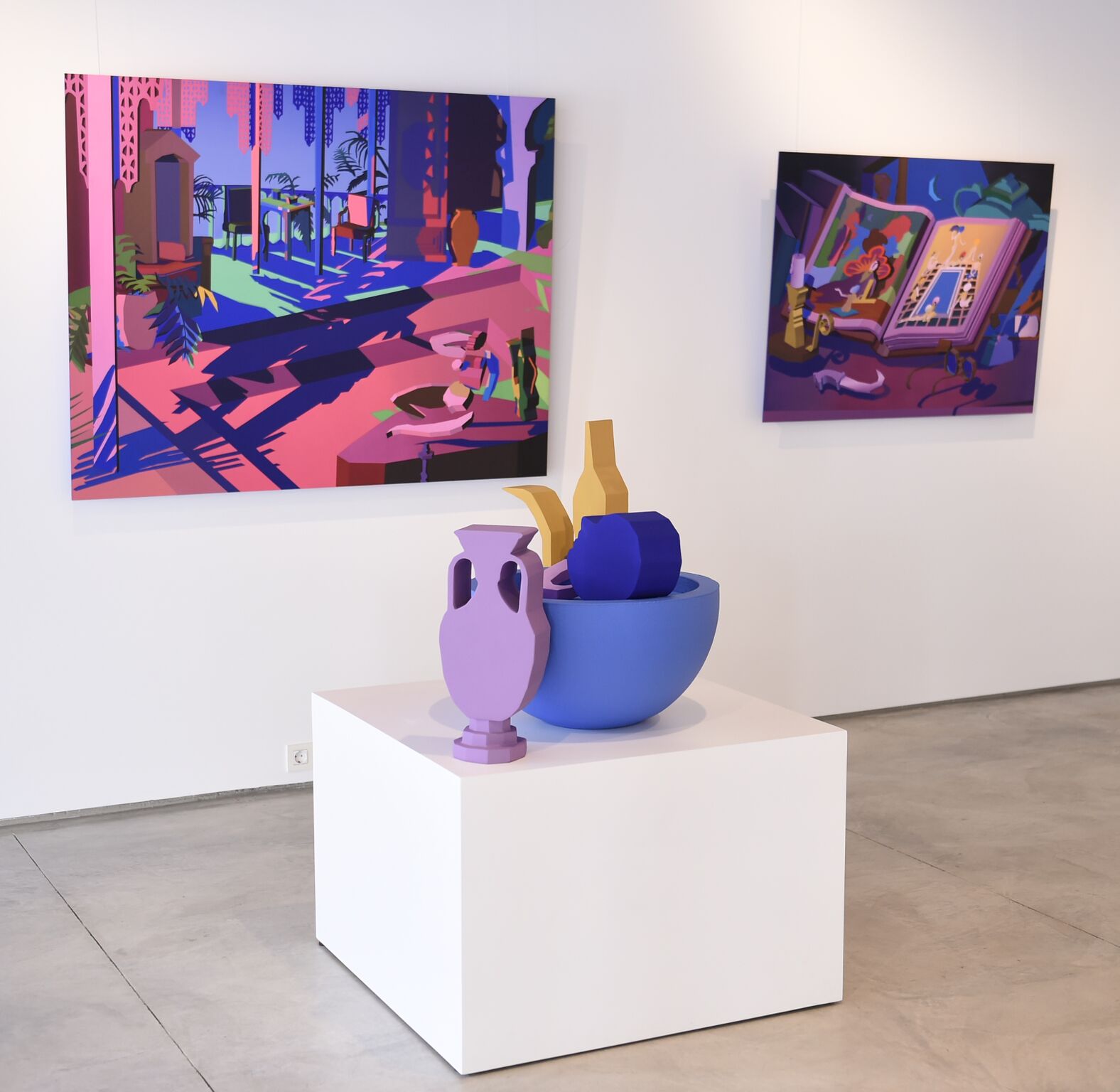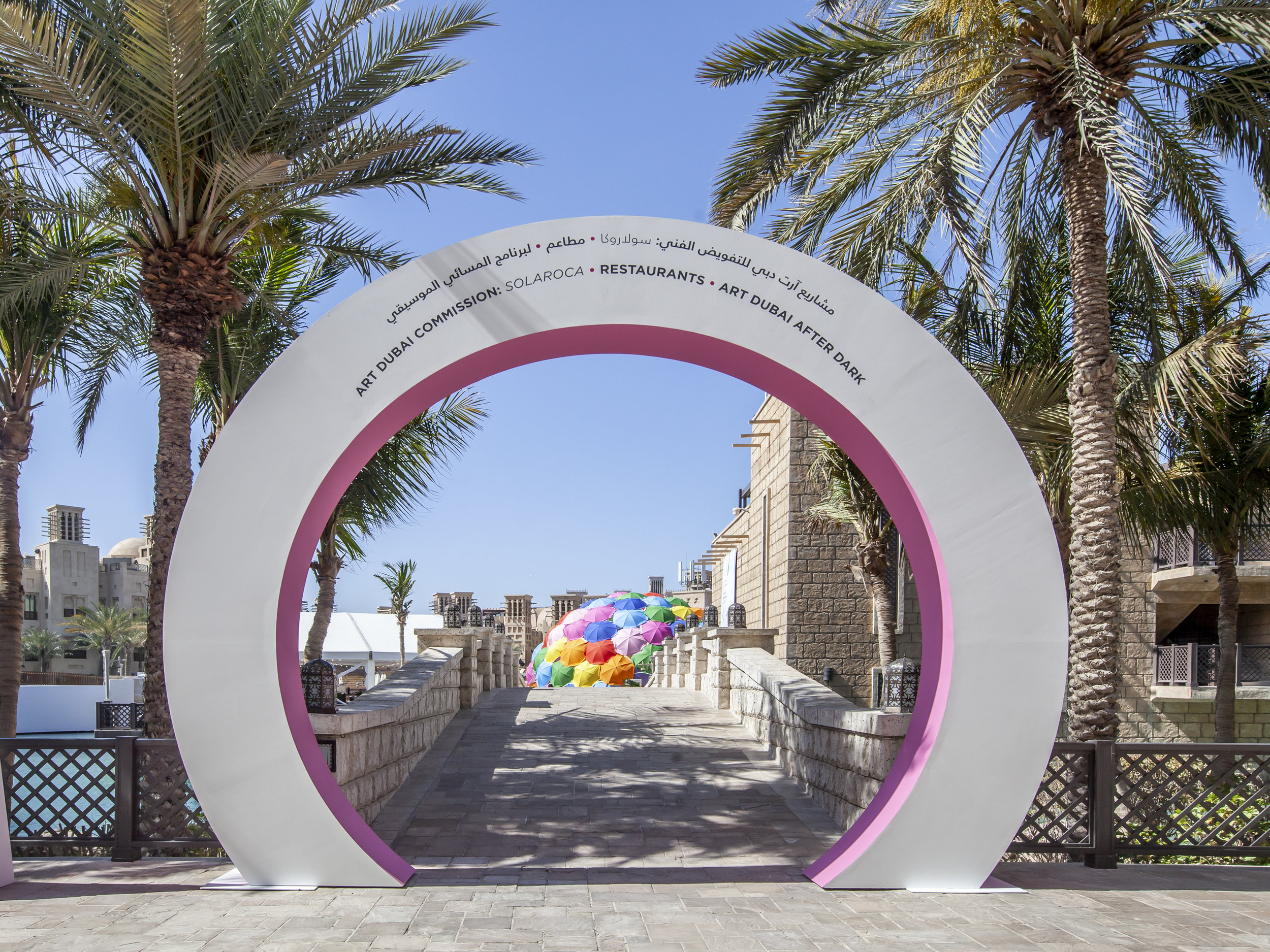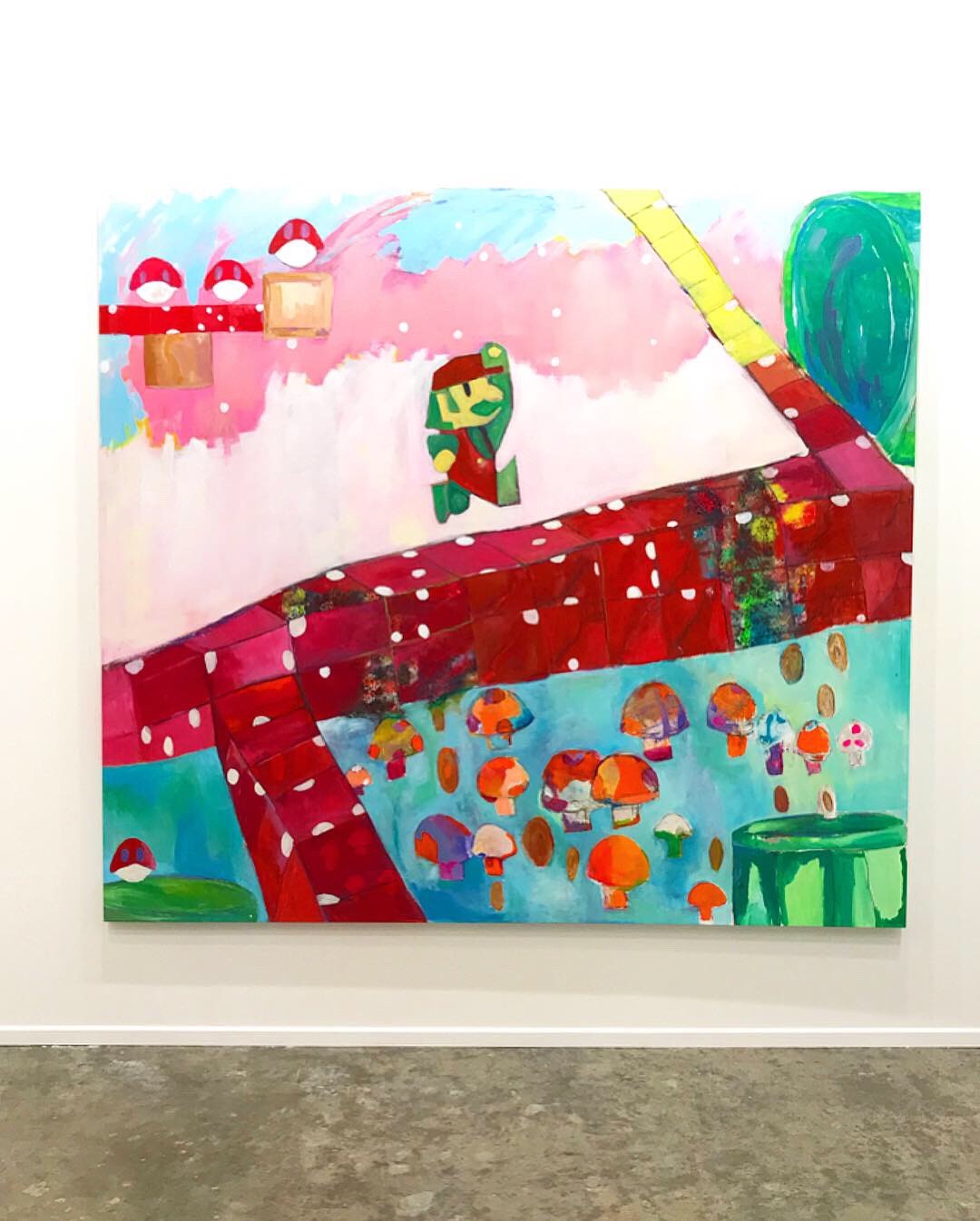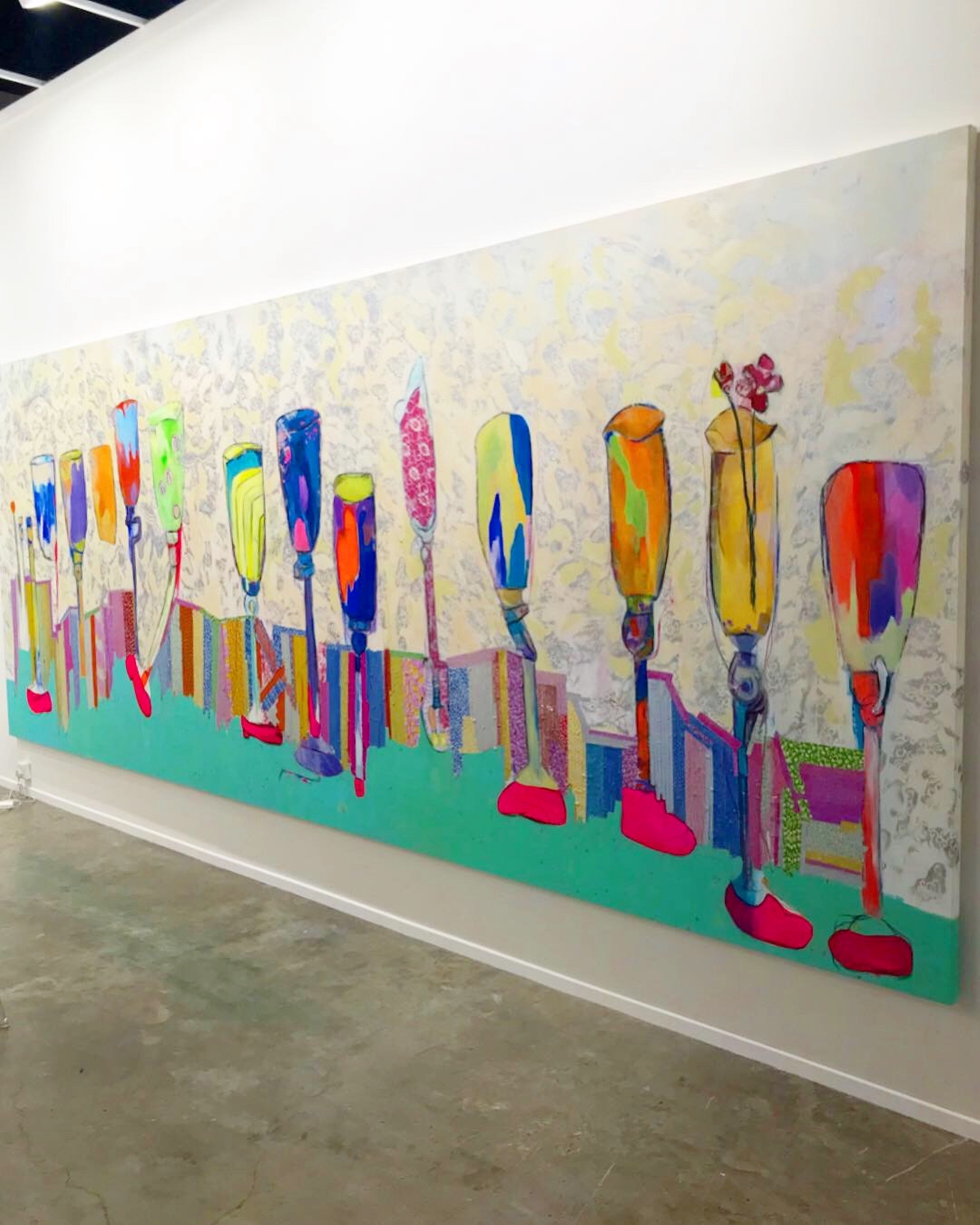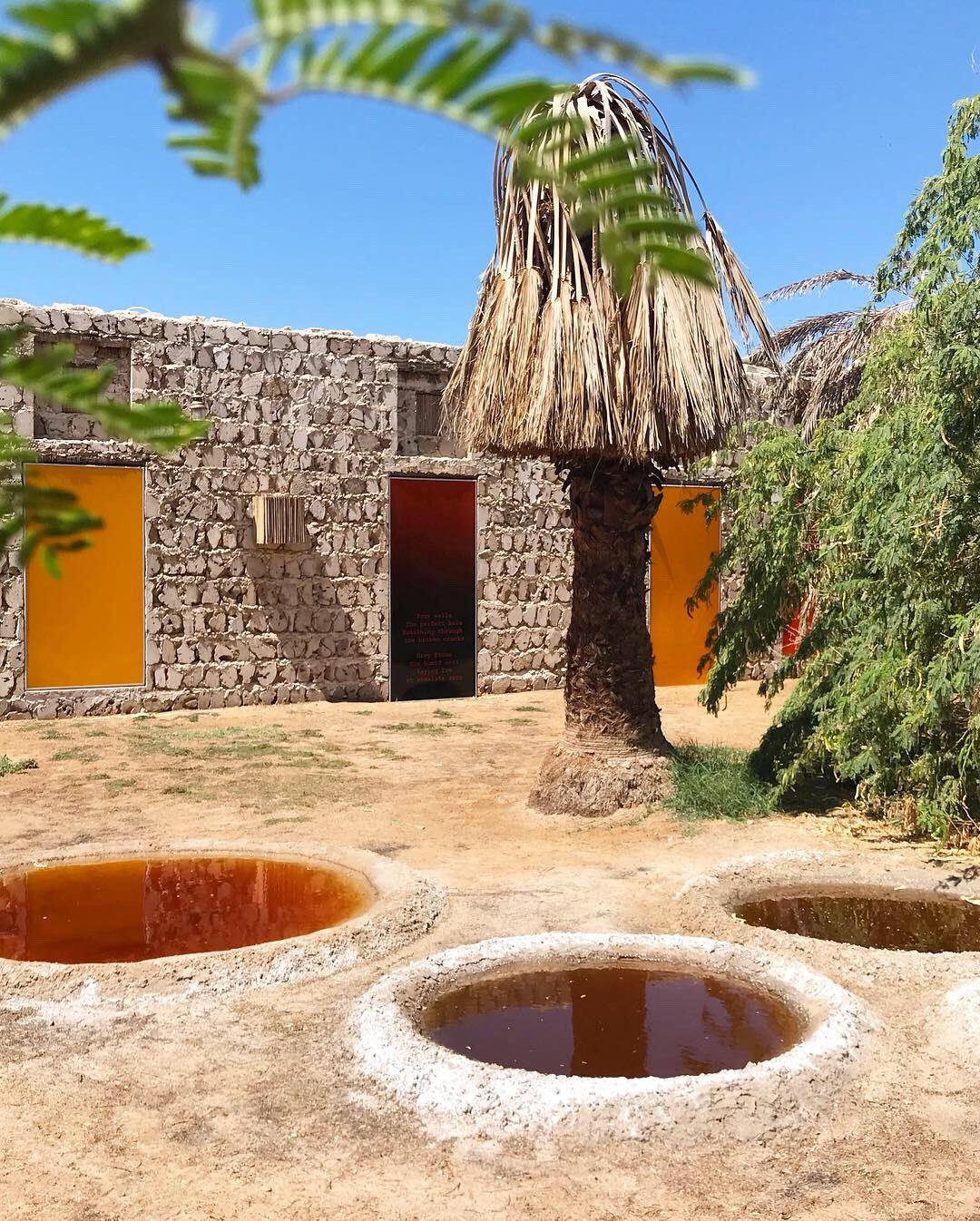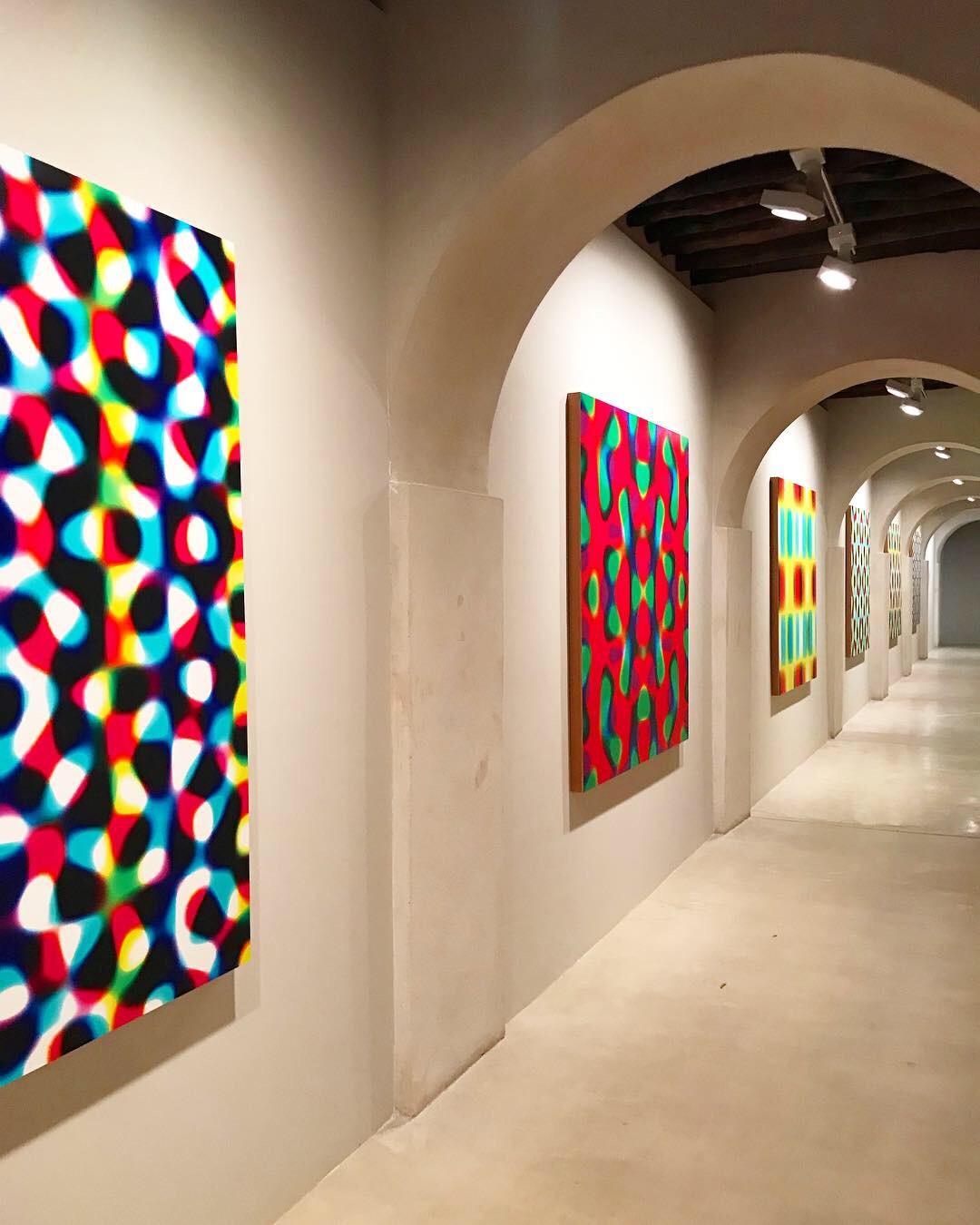Tales from the Middle
The Thousand and One Nights at Artual Gallery in Beirut
The Middle East is perhaps the most intriguing and misunderstood region in the world. Understandably so, given the amount of conflict that geographical demarcations, religious groups and politics have interplayed in the area for more than 20 centuries. And that mysterious and magical piece of land that extends transcontinentally from Egypt to Iran has borne fruit in artistry and creativity — the fights, the wars, the bloodshed -- all have contributed to much needed voices and perspectives in art and cultural development.
Jonathan Chapline’s commissioned works for The Thousand and One Nights at Artual Gallery in Beirut
My time in the Middle East started in Beirut, Lebanon, where I had the honor to curate the inaugural exhibition that opened the doors of Artual Gallery. I commissioned American artists Jamea Richmond-Edwards, Allison Zuckerman, Jonathan Chapline, Holly Coulis, Rosson Crow, Monica Kim Garza and Canyon Castator to create works reinterpreting the famed folk tales of “The Thousand and One Nights.” The heroine Scheherazade, who was a feminist character made up 1200 years ago who saved her own life thanks to her creativity and brilliance, was at the center of the artists’ creations. Artual is looking to build a true intercultural dialogue between the rest of the world and Lebanon, by collaborating with curators and other galleries whose artists and vision fit the premise of embracing diverse points of view.
After the Mediterranean and breezy Beirut in the Levant, the golden and sandy Arabian Gulf became my destination. Dubai, Sharjah and Abu Dhabi are at the forefront of the Emirati cultural institutions and activations and it is easy to see why these three places are becoming increasingly relevant in art circles worldwide.
Solaroca by Opavivara, Art Dubai
Art Dubai, the main fair in the Middle East, is in its 13th edition and continues to have the presence of a very robust group of galleries from the region, including those coming from places that are perceived as both remote and removed from contemporary art conversations such as those in Karachi, Pakistan and Tehran, Iran. Nothing could be further from the truth. It was indeed Zawyeh Gallery from Ramallah, Palestine, presenting a solo series of paintings by Palestinian artist Rana Samara, titled “War Games”, that moved me the most. The large canvases were informed by Samara’s own life in Palestine, when as a child her home was occupied and ransacked by the military - she was playing video games and vividly recalls that at the moment it all happened, she didn’t want to “lose a life” in her Super Mario Bros game. Children, even in times of turbulent conflict, only want to play and to surround themselves with safety objects to which they hold onto fiercely for comfort. We may not be able to fully relate or understand what happens in Gaza or the West Bank, but we do know what children feel or enjoy. Samara has been observing and working with Syrian refugee children and Palestinian children who have suffered losses because of the war. Her work translated in well-composed raw and visceral brushstrokes the sad realities of her surroundings and that of the children, in works that are dynamic, full of color, emotion, ingenuity and deep spirituality.
Part of the reason I believe Art Dubai is a unique and successful fair, is because it takes curatorial stands that are fresh and have a relevant point of view. For example, a new section of the fair called “Bawwaba” (meaning “gateway” in Arabic) focused on solo presentations by artists addressing issues of global migration, socioeconomic structures and identity. Among ten diverse galleries, I was struck by the Addis Ababa-based installation of artist Wanja Kimani, who with embroideries and videos evoked experiences of having to leave behind the place where she was born and a longing for familiarity.
The Residents section invites galleries who propose one of their artists to spend 4 to 8 weeks in the UAE creating new work interlaced with the cultural observations of the region, in dialogue with the local traditions. The focus of this year is Latin America, with galleries such as A Gentil Carioca from Rio de Janeiro, presenting the work of Brazilian artist Laura Lima and Ruth Benzacar Galería de Arte from Buenos Aires, who chose Argentinean Luciana Lamothe.
Bernard Buhmann’s show at Carbon 12, Dubai
Alzerkal Avenue, with its many rows of enormous warehouses, housing more than 25 contemporary art galleries, continues to grow at a rapid pace. Carbon 12, a gallery that is celebrating its 10th year in business and pioneered Alzerkal as the art district of Dubai, presented a solo show by Viennese painter Bernard Buhmann named “The Chaser, the Ambusher, and the Fickle,” making reference to the characters in the video game Pac Man. The 13 geometric paintings reminiscent of constructivism in saturated hues intersect the world of coding and technology in a vivid and engaging form.
Fabric(ated) Fractures presented by the Dhaka Art Summit at Concrete in Dubai
Also in Alzerkal is the Dhaka Art Summit, which originated in Bangladesh as an initiative of the Samdani Art Foundation and gives a platform for Bangladeshi and Southeast Asian contemporary artists. It presented a compelling exhibition called “Fabric(ated) Fractures” curated by Diana Campbell Betancourt. The artists in the exhibition continue to explore the novelty and pain of imposed borders in Bangladesh, a country that was constituted as an independent state in 1972, as well as other Southeast Asian artists who are challenging the ideas of nation, state and territories. The Dhaka Art Summit is housed at Concrete (a cultural venue designed by Rem Koolhaas in a building of more than 6500 square feet and double-high ceilings that can be configured to create an indoor-outdoor environment), making the exhibition even more appealing for everyone who wants to explore it.
Around the block is the Ishara Foundation, which opened only three days ago, established by Smita Prabhakar, an Indian-born but UAE-based collector, who got a curatorial team together to showcase artists that she collects with a focus on India, Pakistan, Bangladesh, Sri Lanka and Nepal. The opening exhibition “Altered Inheritances: Home is a Foreign Place” is by two female Indian artists: Zerina and Shilpa Gupta - both present issues directly related to geographical dislocation, demarcation of the land, and belonging.
The rooftop of the Jameel Art Centre
The Jameel Art Centre opened only four months ago and it overlooks the Jaddaf Waterfront. The building is expansive and the architecture kept simple with several internal gardens, terraces and courtyards that let the light in from every corner. The show that called my attention the most was “Crude,” a deep and comprehensive look at what the discovery of oil has meant for the Gulf - the relentless abuse of the environment, the politics behind assigning oil contracts, the involvement of international corporations and the motivations behind the strategic United States-initiated wars in Iraq. Alessandro Balteo-Yazbeck, Hassan Sharif, and Michael John Whelan are among the artists who give life to this show through acute and clever works installed in several galleries.
The Sharjah Biennial opened a week ago in the city of Sharjah, inside the Sharjah Art Foundation, which is unlike anything else in the very saturated and increasingly exhausting art world. The Foundation is composed of several squares surrounded by a series of houses that preserve the original Arab architecture but have been renovated to include glass walls, concrete floors and air conditioning. Built on very arid land, surrounded by olive and palm trees, the setting is already inviting and enticing. Curated by Zoe Butt, Omar Kholeif and Claire Tancons, “Leaving the Echo Chamber” is positioned to let more than 80 artists push the boundaries and expose what the media and structures of power and control want to hide from the world. Some of my favorite installations were Alfredo Jaar’s “33 Women,” which highlights and celebrates 33 women activists, journalists and humanitarian leaders whose faces are practically invisible from the mainstream. Also, Qiu Zhijie created an installation with giant maps and ink cartography drawings charting the historical encounters between the Chinese and the Arabs which felt both enlightening and amusing.
What the Middle East has contributed throughout history to the arts and culture is indelible, no matter how many wars and hostilities it has undergone. The artists, the patrons, the fairs, the galleries, the institutions; they are all showing the world that there is a way to coexist and to participate in a much more global and larger world that isn’t circumscribed by artificial demarcations and media circuses. As I’ve always said, art will save the world.


